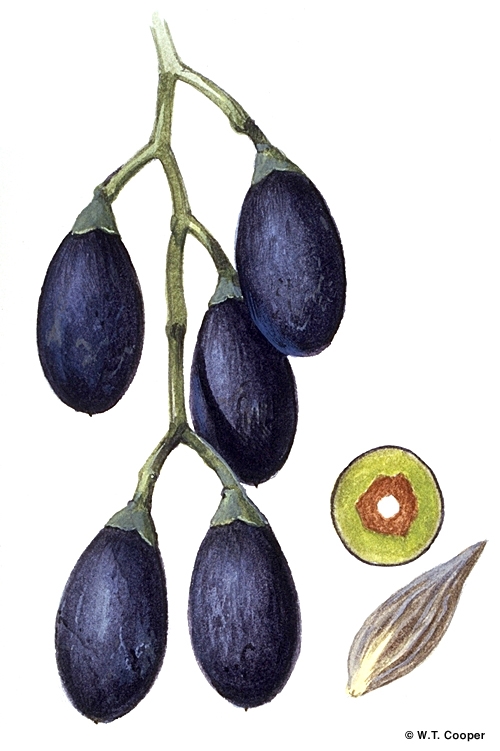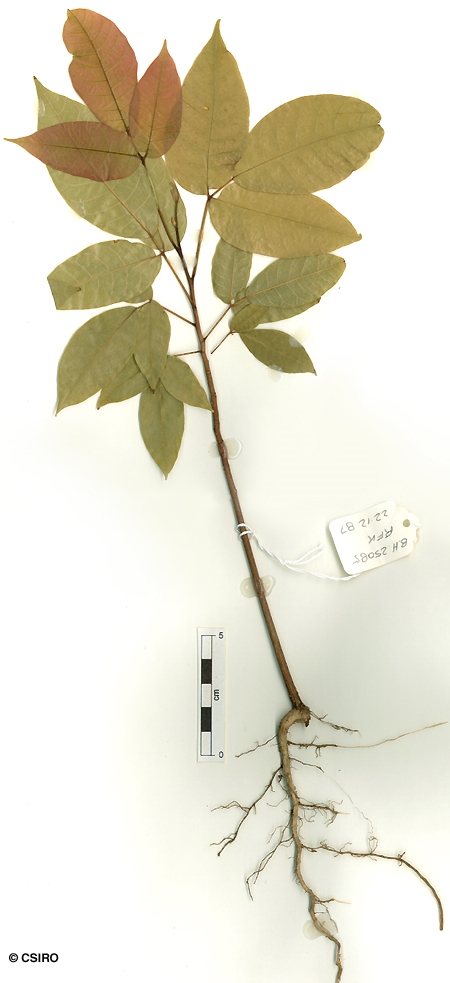Australian Tropical Rainforest Plants - Online edition
Canarium vitiense A.Gray




Gray, A. (1854) United States Exploring Expedition (Wilkes Expedition) Botany. Phanerogamia 1: 373. Type: Mathuata, Vanua Levu, Fiji, 1838-1842 Wilkes Exped. s.n.; holo: GH; iso: K, P. Fide P. W. Leenhouts, Blumea 9:451 (1959).
Canarium
Stalk of the terminal leaflet longer than those of the lateral leaflets. Pulvinus normally present on the terminal leaflet, sometimes also on the lateral leaflets. Stipules long and narrow, about 5-9 x 0.5-1 mm. Leaflet blades about 11-19 x 6-7 cm. Twigs rather pithy. Scattered pores visible with a lens over nearly all of the transverse section of the pith.
Inflorescence up to 12 cm long. Petals about 5-6 mm long.
Fruits about 17-30 mm long. Cotyledons 3-lobed.
Cotyledons trifoliolate, leaflets about 45-50 mm long, petiole hairy on the upper surface. First pair of leaves not toothed. At the tenth leaf stage: a few scattered hairs on the stem, petiole and rhachis; terminal bud densely hairy; stipules short, hairy. Seed germination time 30 to 73 days.
This species may have medicinal properties.





